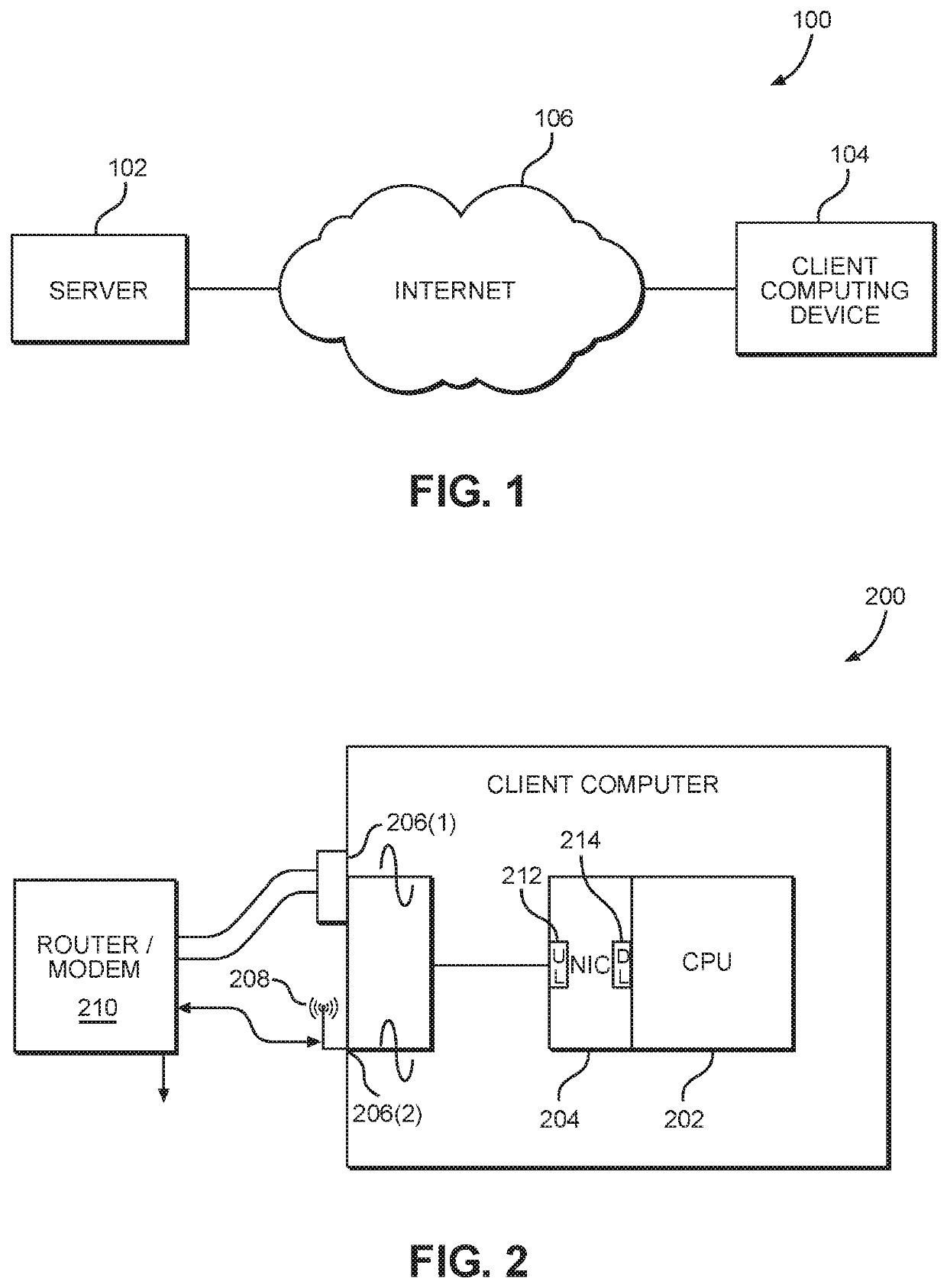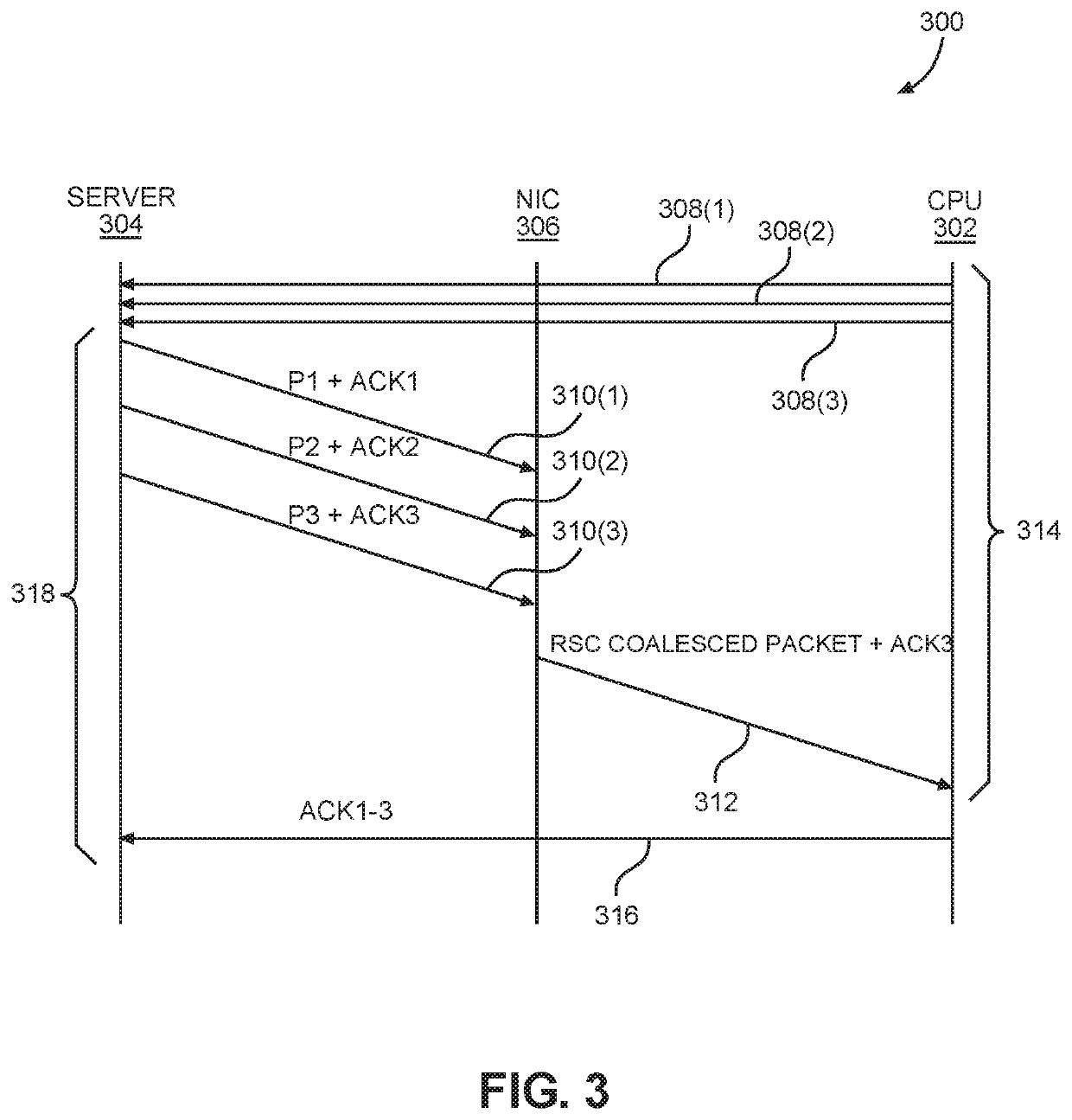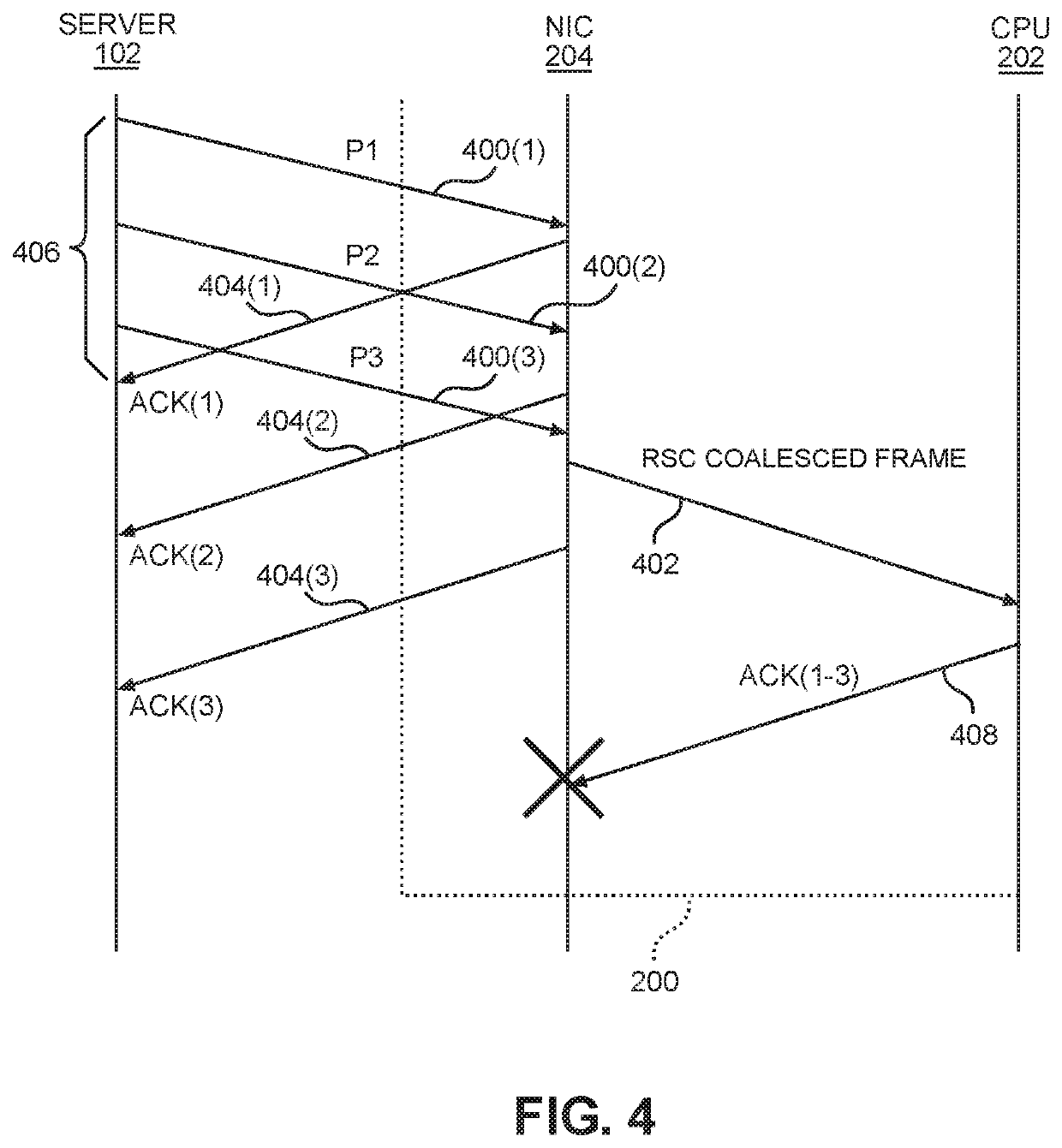Alternate acknowledgment (ACK) signals in a coalescing transmission control protocol/internet protocol (TCP/IP) system
signal technology, applied in the field of coalescing signaling in a transmission control protocol/internet protocol (tcp/ip) network, can solve problems such as excessive power consumption, network congestion, and network may experience unnecessary latency delays, and achieve the effect of reducing latency, improving network performance, and eliminating latency
- Summary
- Abstract
- Description
- Claims
- Application Information
AI Technical Summary
Benefits of technology
Problems solved by technology
Method used
Image
Examples
Embodiment Construction
[0017]With reference now to the drawing figures, several exemplary aspects of the present disclosure are described. The word “exemplary” is used herein to mean “serving as an example, instance, or illustration.” Any aspect described herein as “exemplary” is not necessarily to be construed as preferred or advantageous over other aspects.
[0018]Aspects disclosed in the detailed description include alternate acknowledgment (ACK) signals in a coalescing Transmission Control Protocol / Internet Protocol (TCP / IP) system. Exemplary aspects of the present disclosure contemplate examination of packet payloads at a network interface card (NIC) and generating an ACK signal for a sending server before sending a coalesced packet to an internal processor. Further exemplary aspects of the present disclosure contemplate examination of packet payloads at the NIC and sending an ACK signal to the internal processor for ACK signals that are received from the sending server before sending the coalesced pac...
PUM
 Login to View More
Login to View More Abstract
Description
Claims
Application Information
 Login to View More
Login to View More - R&D
- Intellectual Property
- Life Sciences
- Materials
- Tech Scout
- Unparalleled Data Quality
- Higher Quality Content
- 60% Fewer Hallucinations
Browse by: Latest US Patents, China's latest patents, Technical Efficacy Thesaurus, Application Domain, Technology Topic, Popular Technical Reports.
© 2025 PatSnap. All rights reserved.Legal|Privacy policy|Modern Slavery Act Transparency Statement|Sitemap|About US| Contact US: help@patsnap.com



